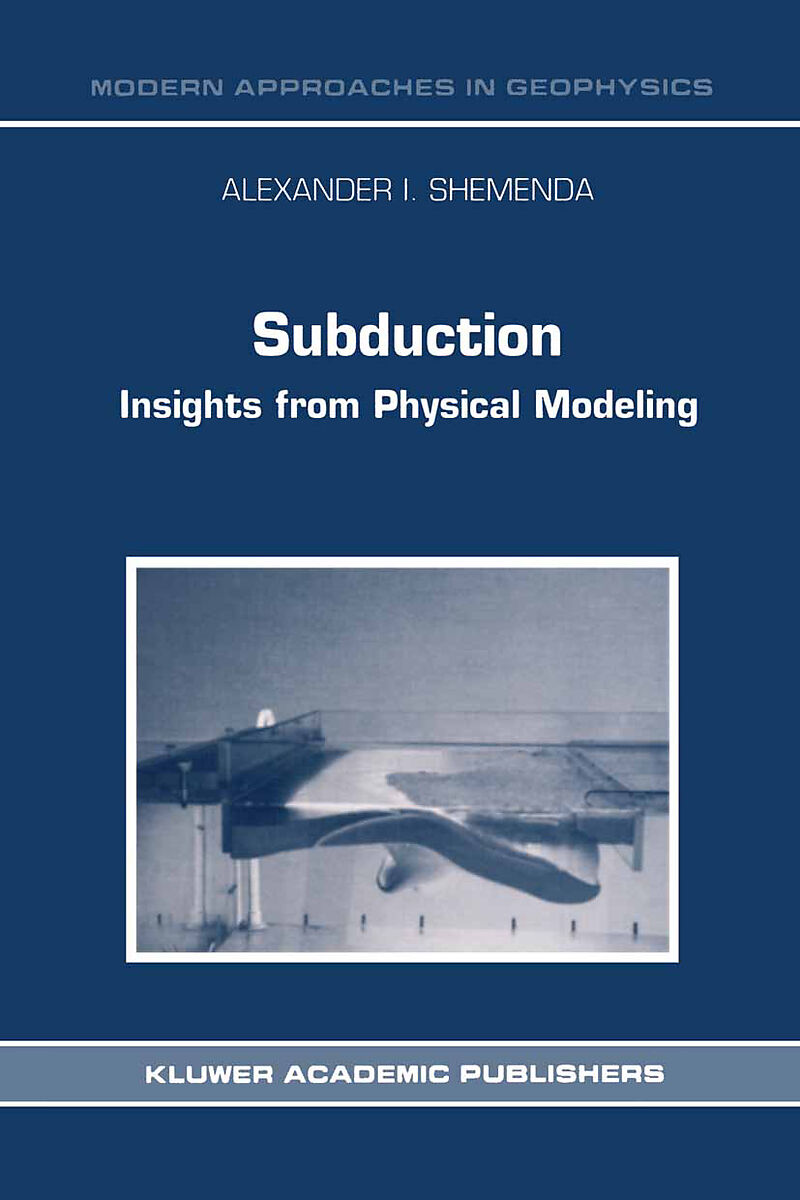Subduction
Einband:
Fester Einband
EAN:
9780792330424
Untertitel:
Insights from Physical Modeling
Autor:
Alexander I. Shemenda
Herausgeber:
Springer Netherlands
Auflage:
1994
Anzahl Seiten:
232
Erscheinungsdatum:
30.09.1994
ISBN:
0792330420
This book is devoted to the quantitative physical modeling of subduction and subduction-related processes. It presents a coherent description of the modeling method (including similarity criteria, and a novel applied experimental technique), results from model experiments, theoretical analysis of results on the basis of continuum mechanics, and their geodynamic interpretation. Subduction is modeled in general as well as applied to particular regions using both 2-D and 3-D approaches, with both slab-push and slab-pull driving forces. The modeling covers all stages from subduction initiation to `death', different regimes of subduction producing back arc extension and compression, blocking of subduction and jumps of subduction zone, arc-continent collision and continental subduction.
This work is for geologists and geophysicists interested in geodynamics of the convergent plate boundaries and in mechanics of the lithosphere.
Zusammenfassung
The modeling covers all stages from subduction initiation to `death', different regimes of subduction producing back arc extension and compression, blocking of subduction and jumps of subduction zone, arc-continent collision and continental subduction.
Inhalt
1. Similarity Criteria.- 1.1. Introduction.- 1.2. The general approach to physical similarity.- 1.3. Derivation of similarity criteria from the equations of continuum mechanics.- 1.4. Dilatant plasticity and brittle failure.- 1.5. Conclusions.- 2. Model Setting, Technique and Facilities.- 2.1. Introduction.- 2.2. General modeling scheme.- 2.3. Model materials.- 2.4. Experimental installation and technique.- 3. Initiation and Development of Subduction Under Horizontal Compression of the Lithosphere.- 3.1. Introduction.- 3.2. Results of the experiments.- 3.3. Analysis of experimental results.- 3.4. Formation of a subduction zone in a homogeneous oceanic lithosphere.- 3.5. Initiation of a subduction zone on an old inclined fault.- 3.6. Strain and stress in the subducting plate.- 3.7. Estimation of pressure between the plates in the subduction zone.- 3.8. Elastico-plastic bending of the subducting plate, its yield limit and modulus of elasticity.- 3.9. Conclusions.- 4. Relationship Between Subduction Regime and Back Arc Dynamics.- 4.1. Introduction.- 4.2. Experimental results.- 4.3. Hydrostatic suction of the plates.- 4.4. Stress in the overriding plate due to subduction of an old (dense) lithosphere.- 4.5. Other mechanisms for tension in the overriding plate.- 4.6. Influence of crustal thickness and density of the overriding plate on its stress state.- 4.7. Geodynamic interpretation of modeling results.- 4.8. The location of back arc rifting.- 4.9. Relationship of the back arc regime to relief and the gravity field in subduction zones.- 4.10. Benioff zone dip angle and back arc regime.- 4.11. On the cyclicity of back arc tension and compression.- 4.12. Vertical movements in subduction zones.- 4.13. On causes of the arcuate configuration of subduction zones.- 4.14. Relationof seismicity in the subduction zone with back arc dynamics.- 4.15. On the mechanism of back arc tension in some particular subduction zones.- 4.16. South-Sandwich subduction zone.- 4.17. Possible mechanism for evolution of the Scotia Sea region.- 4.18. The Aegean region.- 4.19. Conclusions.- 5. Jumps of Subduction Zones, Subduction Reversal, and Closing of Back Arc Basins.- 5.1. Introduction.- 5.2. Location of the lithospheric failure and jump of subduction zone.- 5.3. Mechanism for lithospheric failure and polarity of a new subduction zone.- 5.4. Deformation of the overriding plate in the Kuril subduction zone.- 5.5. Subduction of the continental margin: arc-continent collision in Taiwan.- 5.6. Conclusions.- 6. Continental Subduction.- 6.1. Introduction.- 6.2. Modeling approach.- 6.3. Similarity criteria and the model materials.- 6.4. Experimental results.- 6.5. Analysis of the results.- 6.6. Concluding remarks and possible application of the results to the India-Eurasia collision.- References.- Notations.

Leider konnten wir für diesen Artikel keine Preise ermitteln ...
billigbuch.ch sucht jetzt für Sie die besten Angebote ...
Die aktuellen Verkaufspreise von 6 Onlineshops werden in Realtime abgefragt.
Sie können das gewünschte Produkt anschliessend direkt beim Anbieter Ihrer Wahl bestellen.
Loading...
Die aktuellen Verkaufspreise von 6 Onlineshops werden in Realtime abgefragt.
Sie können das gewünschte Produkt anschliessend direkt beim Anbieter Ihrer Wahl bestellen.
| # | Onlineshop | Preis CHF | Versand CHF | Total CHF | ||
|---|---|---|---|---|---|---|
| 1 | Seller | 0.00 | 0.00 | 0.00 |
